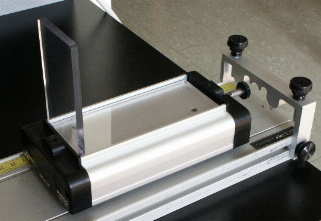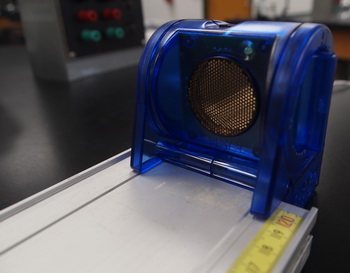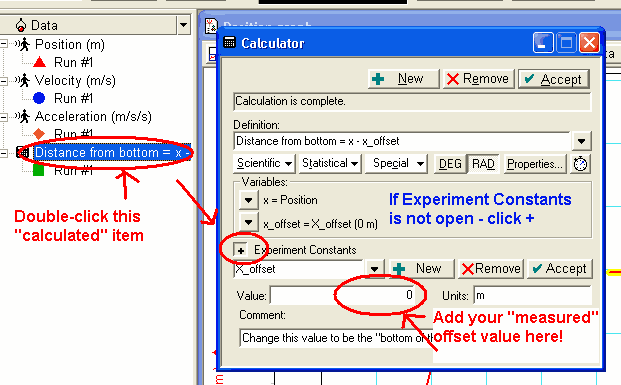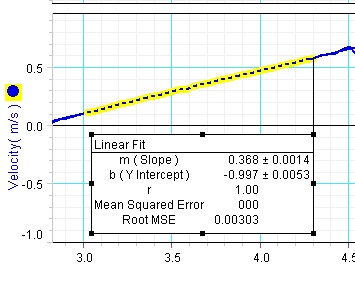General Equipment
For this lab we need :
- 1 motion sensor
- 1 USBLink
- 1 cart with a spring-loaded end and a long track (with end "stop" on low end)
- 1 L-shaped Plexiglass
- end of table pole/clamp to raise track
Target on cart - cart on track - springy thing
We will use the carts with the springy thing at the end - so that it can bounce against the bottom "stop" on the track. Notice the Plexiglas©® target for the motion detector.

Motion detector clamped at top of ramp
The motion detector can clamp onto the top of the ramp. We will use two heights - HIGH (about 12-15 cm) and LOW (about 6-8 cm) for the high end of the track.

Setting up the Motion Sensor and DataStudio
After you record the position of the cart resting at the bottom of the track, select the Position data graph as shown
Measure the position of the cart as shown

Then follow the instruction in the image to the left.
- double-click on the "calculator" item
- make sure the + button is pressed down
- enter the position value as shown and click ACCEPT.

How do I calculate the Acceleration?? (Section 3.7 in manual)
If we have a straight line in the velocity graph (for the cart rolling down the ramp) - that should mean a reasonably constant acceleration. The best way to get this acceleration would be to take the SLOPE of the V vs T graph ... so we will use a LINEAR FIT on the V vs T graph. Use the mouse to select a region of the Velocity vs Time graph where the acceleration is constant (constant slope on the V vs. T graph). Click the LINEAR FIT option. The slope that shows in the annotation would be the value of "gsin(theta)" - the average accleration of that section!
